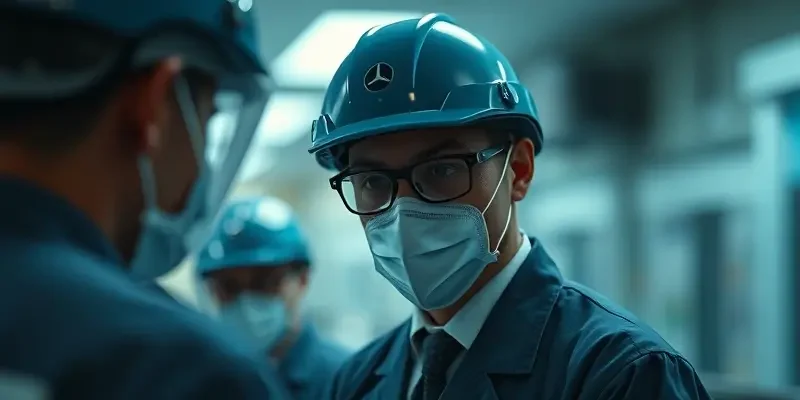Tennis Elbow Braces: Are They Worth It for Recovery? A Science-Backed Guide
Tennis elbow isn’t just for athletes wielding rackets—anyone performing repetitive arm motions, from lifters to home DIY-ers, can develop this nagging injury. If you’re struggling with forearm pain and wondering whether a tennis elbow brace is a magic solution or just another gimmick, you’re in the right place.
I’m a fitness and health expert with 10+ years in sports training and injury management, and I’m here to break down the science, practical use tips, and what really helps you recover.
What Is a Tennis Elbow Brace?
A tennis elbow brace, often called a counterforce brace, is a strap that wraps just below your elbow. Its job is simple: redistribute pressure away from the inflamed tendon on the outside of your elbow (the lateral epicondyle).
Who Uses Them—and Why?
- Athletes & gym-goers: Think tennis players, weightlifters, or CrossFitters—anyone who repeats arm movements.
- Active individuals: Gardeners, desk workers, or even parents frequently picking up their kids.
- The goal? Reduce pain during movement and protect the tendon during healing.
The Science: How Effective Are Tennis Elbow Braces?
Research shows braces can help—though they’re not a silver bullet. Here’s what the evidence says:
- Reduced strain: Braces shift stress from your injured tendon, giving it a break.
- Pain relief: Users often note immediate, though mild, improvements in comfort and grip strength, especially during activity.
- Support for training: By decreasing pain, braces can let you safely ease back into movement as part of your rehab.
But beware: Braces alone won’t cure tennis elbow. The effect is often moderate and may be short-term. Long-lasting recovery hinges on a full rehab approach.
Practical Guidance: Using a Tennis Elbow Brace the Right Way
Wondering if (and how) you should wear one? Try this step-by-step approach:
- When to wear your brace:
- During activities that trigger pain, like lifting or playing sports.
- Remove during rest and rehab exercises to avoid dependency.
- How to fit your brace:
- Place it 1–2 inches below your elbow crease, over the thickest part of your forearm muscle.
- It should feel snug but not uncomfortably tight—too tight can cut off circulation.
- Who benefits most?
- Individuals in the early recovery phase, or when returning to provocative activities.
- If your symptoms are mild to moderate and you’re starting a structured rehab program.
Real-World Example
Imagine Jamie, an avid weekend tennis player, notices a sharp ache after matches. Wearing a brace during play reduces her pain, allowing her to finish the game and begin rehab stretches with less discomfort. Jamie combines bracing with targeted strengthening—a win-win.
Beyond Bracing: Building a Smart, Complete Recovery Plan
A brace is part of the puzzle—not the entire solution. For true recovery:
- Embrace physical therapy: Eccentric strength exercises for the wrist and forearm are gold-standard.
- Focus on load management: Gradually reintroduce challenging movements. Don’t push through severe pain.
- Upgrade technique: Small tweaks in grip, posture, or equipment can prevent future flare-ups.
- To support your recovery routine, consider integrating tools like a massage gun therapy session to help with muscle relaxation and pain relief.
Nutrition and Motivation Tips
- Fuel your tendons: Prioritize protein, vitamin C, and collagen-rich foods to promote healing.
- Stay motivated: Set small, achievable goals and celebrate progress. Visualize success and reach out for professional guidance when needed.
When to Seek Professional Help
Signs a tennis elbow brace isn’t enough? Watch for:
- Persistent, severe pain despite rest and rehab.
- Signs of nerve involvement (numbness, tingling).
- Loss of strength or function.
If these ring true, consult a healthcare provider—there could be underlying issues that need a specialist’s touch.
Key Takeaways
- Tennis elbow braces offer real, albeit moderate, short-term relief—especially during activity.
- Combine bracing with rehab, smart training, and nutrition for best results.
- Don’t ignore persistent pain—professional help is your best ally for stubborn cases.
Remember, recovery is a journey. Use every tool wisely, stay proactive, and you’ll get back to doing what you love—stronger and smarter than before.
Stay tuned for more science-based recovery tips from the GymPulse Club. Got questions or an experience to share? Leave a comment—our community’s here to help you thrive!

